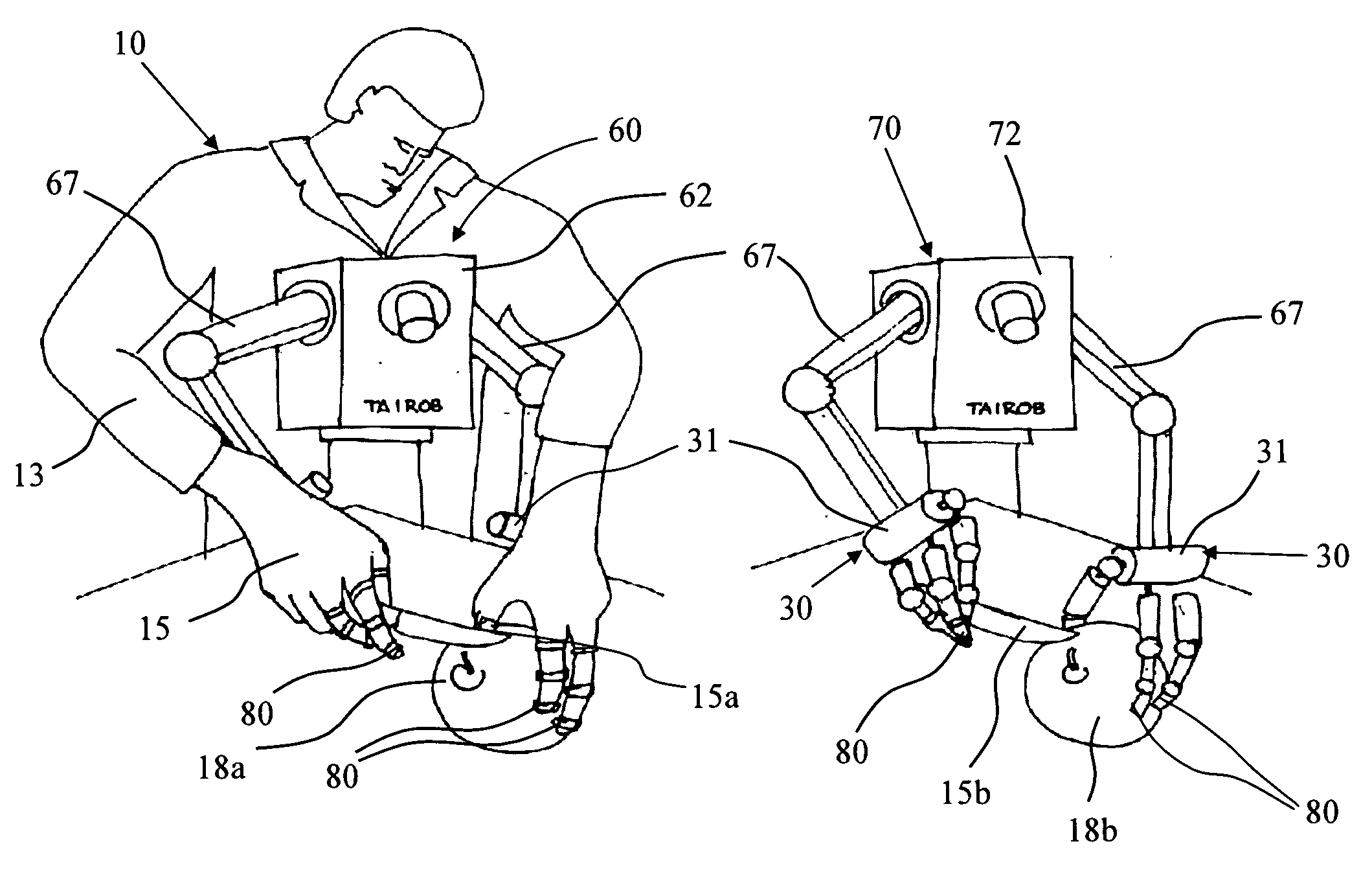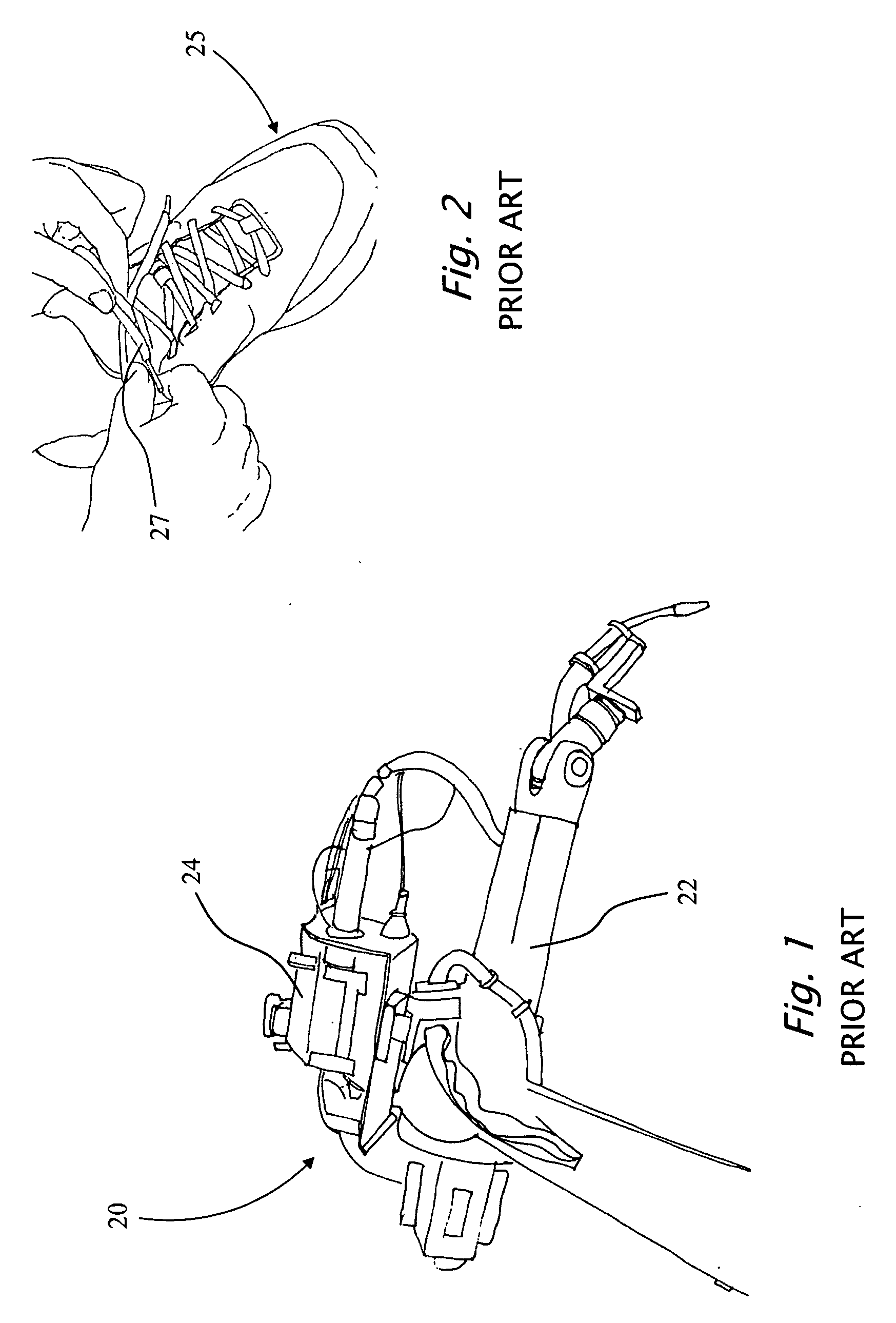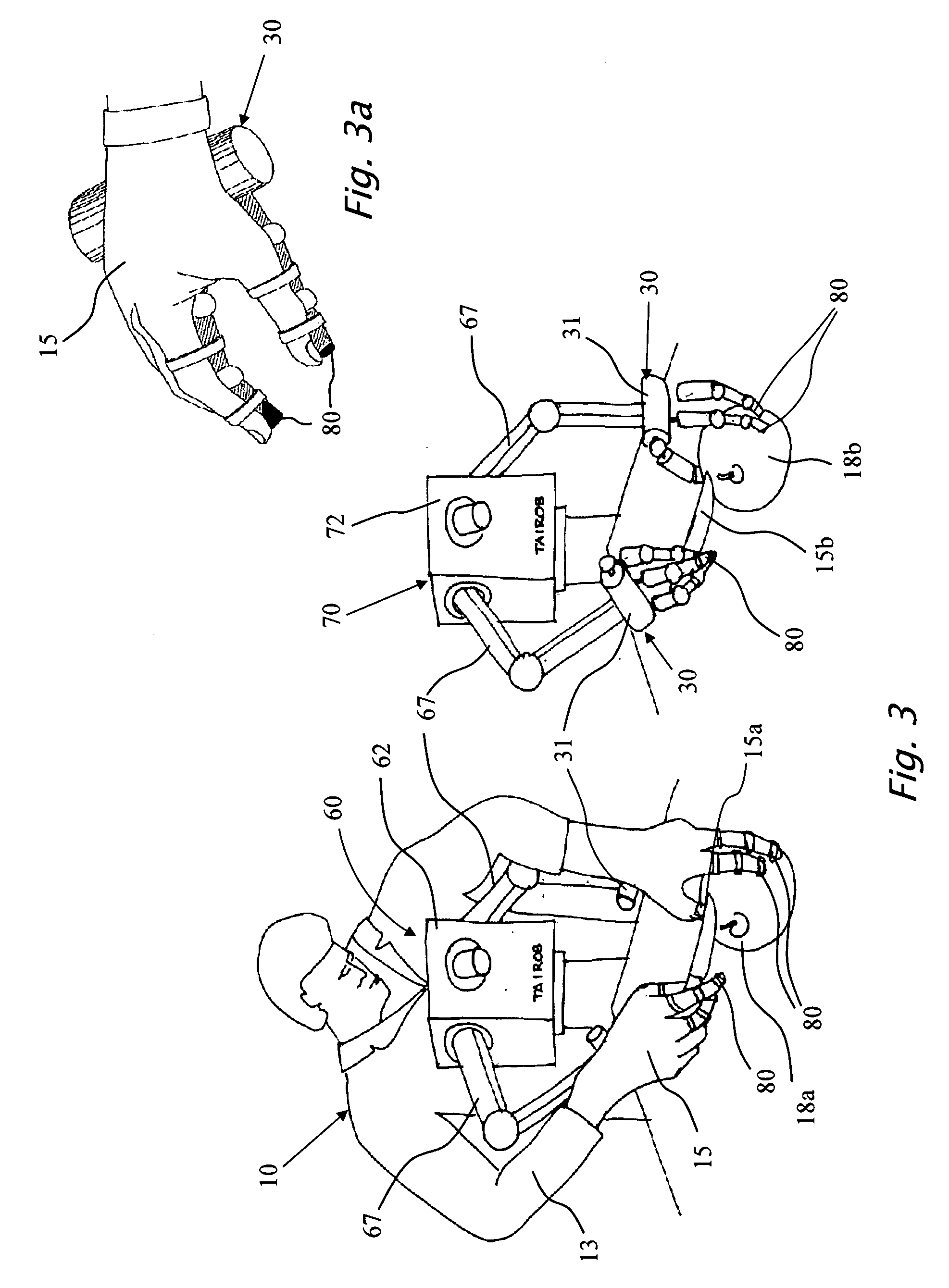Transfer of knowledge from a human skilled worker to an expert machine - the learning process
a technology of human skill and machine, applied in the field of robots, can solve the problems of missing the mass production of robotic systems, high cost of robotic systems, and performing a professional task, and achieve the effect of improving the operational sensitivity of robots
- Summary
- Abstract
- Description
- Claims
- Application Information
AI Technical Summary
Benefits of technology
Problems solved by technology
Method used
Image
Examples
Embodiment Construction
[0035]It is the intention of the present invention to provide a learning environment and method which is a first milestone in an expert machine that implements the master-slave robotic concept. The present invention is of a learning environment and method for teaching the master expert machine (MEM) by a skilled worker that transfers his professional knowledge to the master expert machine in the form of elementary motions and subdivided tasks.
[0036]It is a further intention of the present invention to provide a stand alone learning environment, where a human wearing one or two innovative gloves transfers a task performing knowledge to a robot in a different learning process than the Master-Slave learning concept. The glove's fingers are equipped with 3D feeling sensors and the displacement, velocity\acceleration and force are recorded. A computerized processing unit and records and prepare the acquired data for a mathematical transformation which result is commands to the motors of ...
PUM
 Login to View More
Login to View More Abstract
Description
Claims
Application Information
 Login to View More
Login to View More - R&D
- Intellectual Property
- Life Sciences
- Materials
- Tech Scout
- Unparalleled Data Quality
- Higher Quality Content
- 60% Fewer Hallucinations
Browse by: Latest US Patents, China's latest patents, Technical Efficacy Thesaurus, Application Domain, Technology Topic, Popular Technical Reports.
© 2025 PatSnap. All rights reserved.Legal|Privacy policy|Modern Slavery Act Transparency Statement|Sitemap|About US| Contact US: help@patsnap.com



